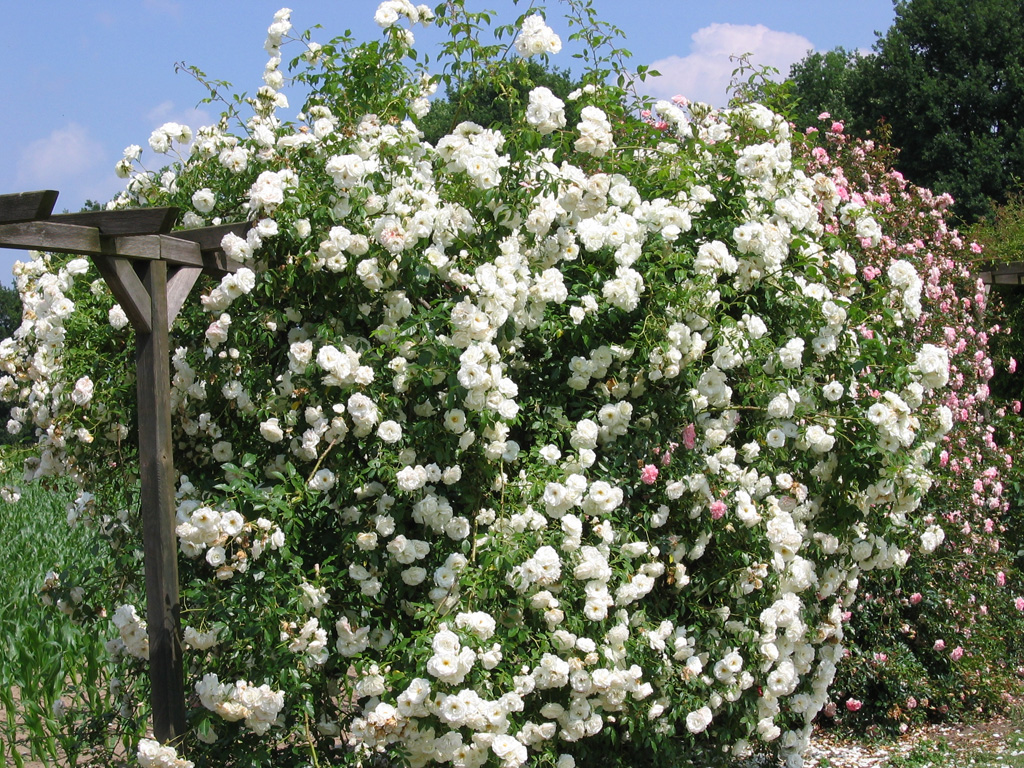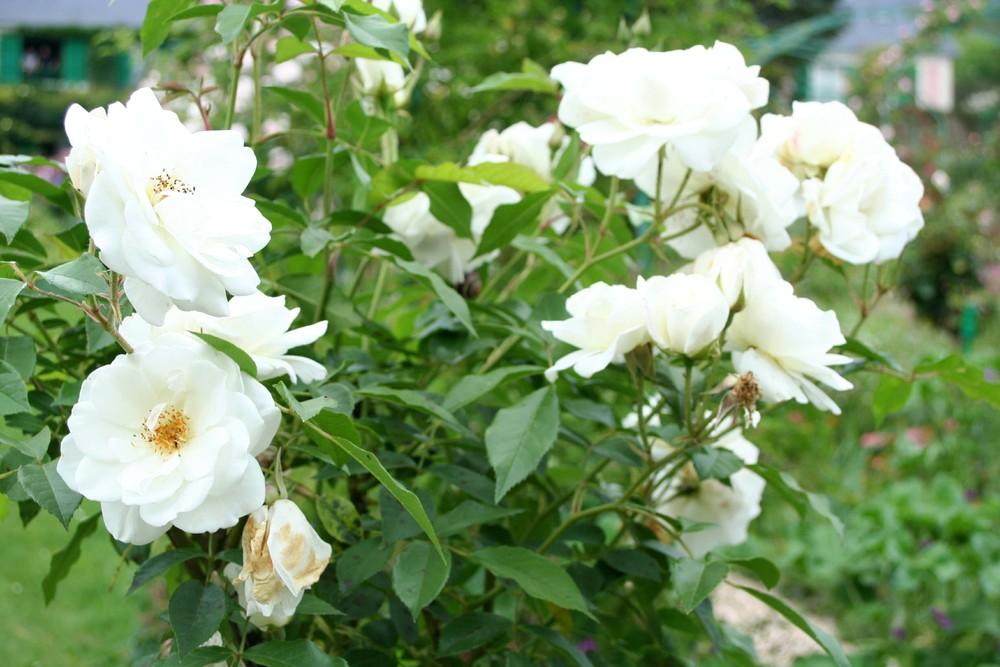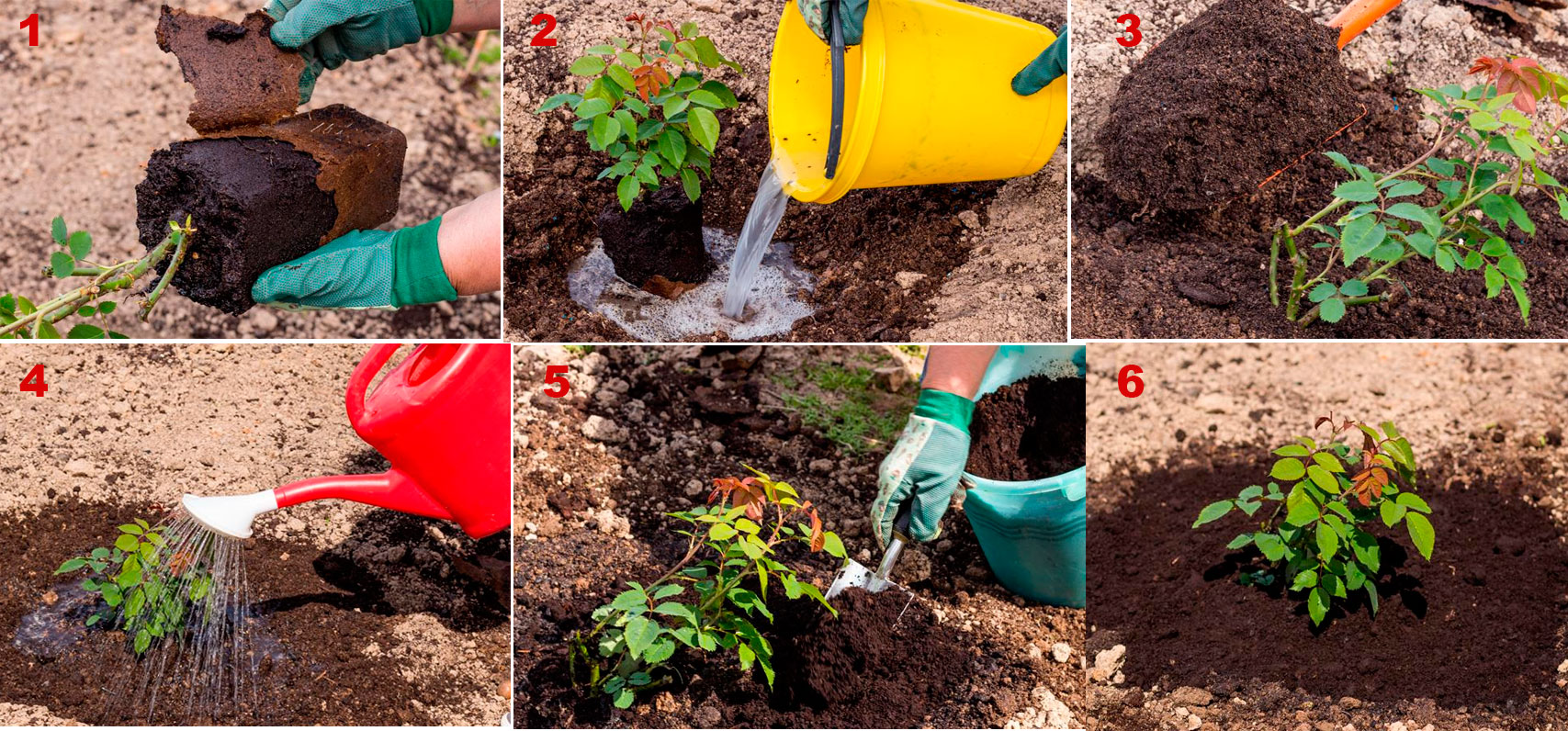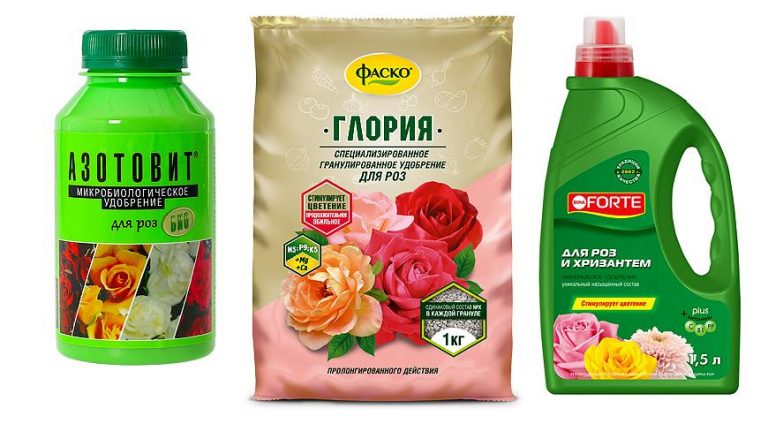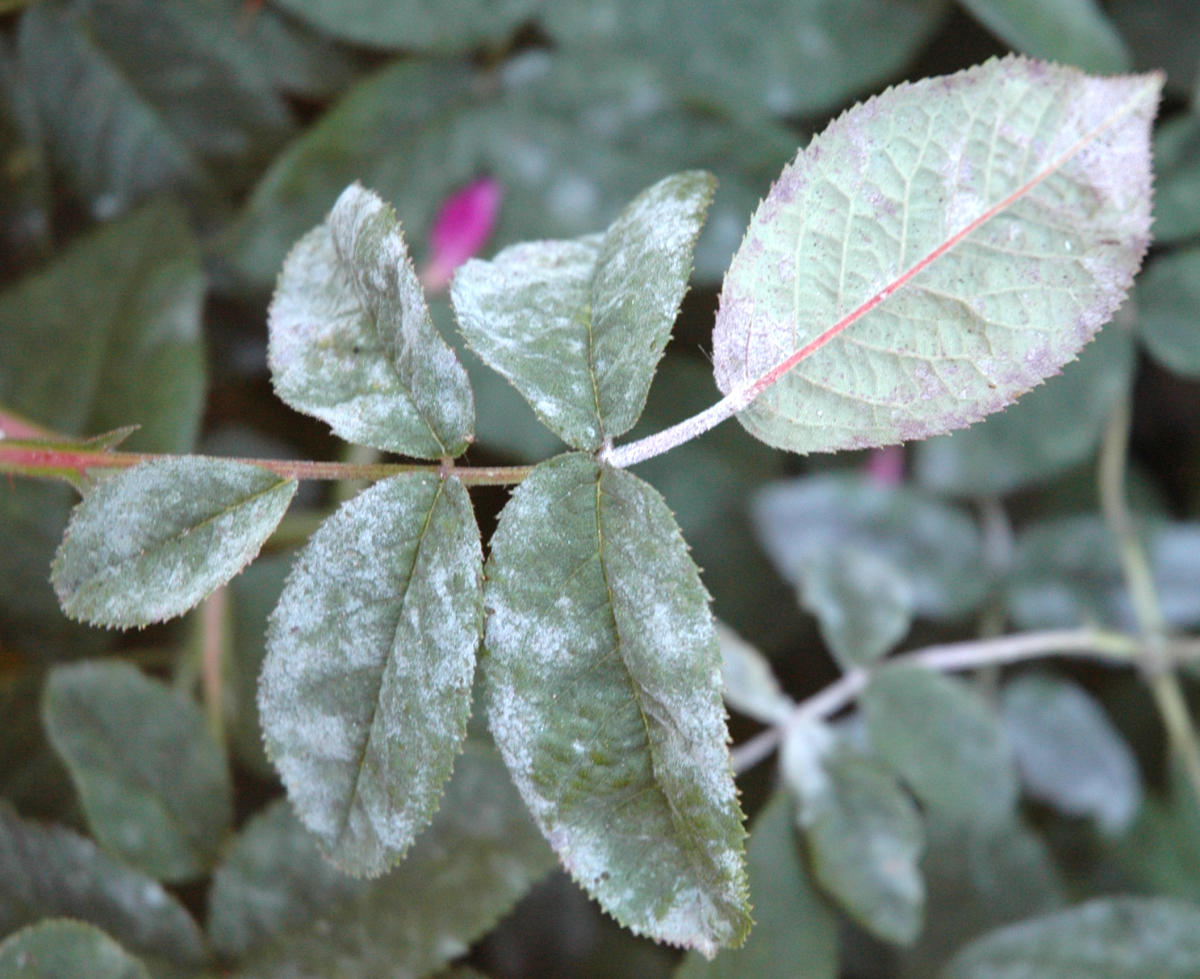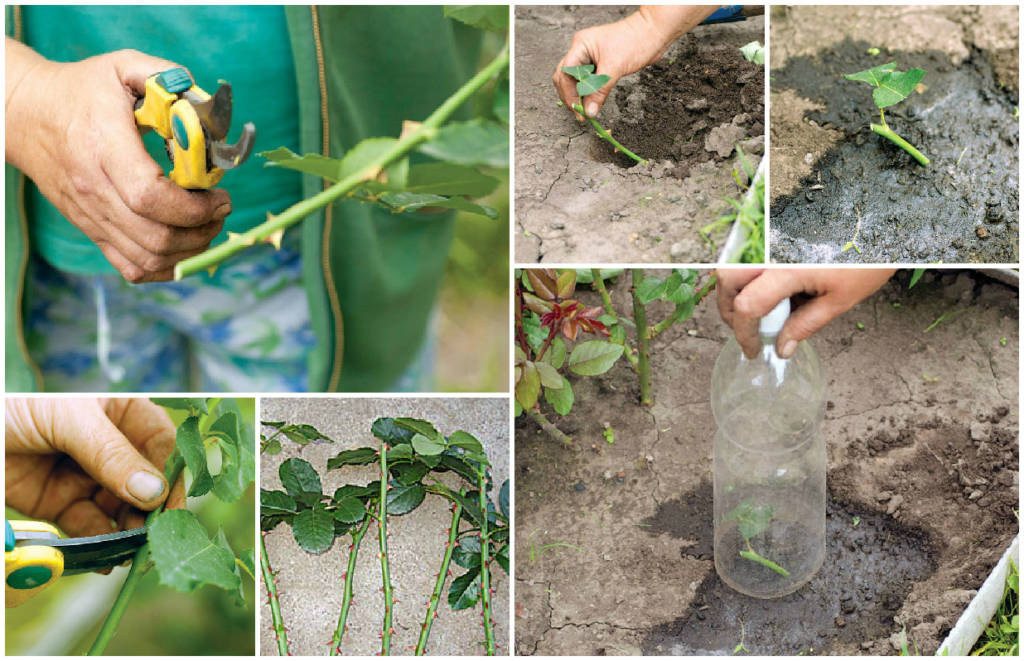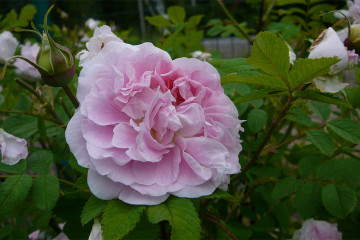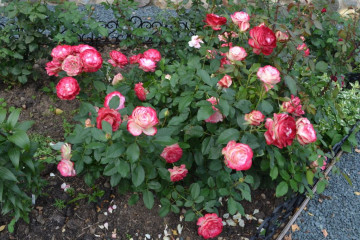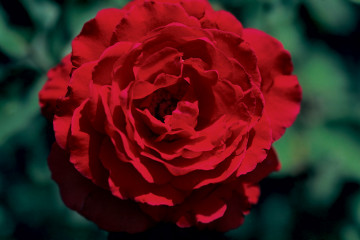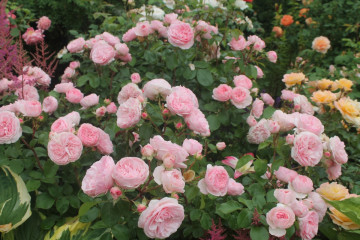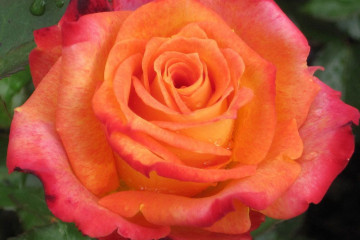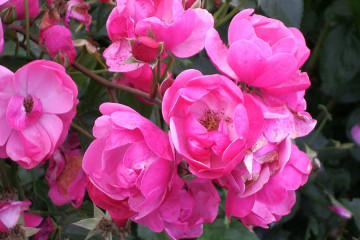Rose Iceberg
Content:
Rosa Iceberg (Iceberg) is distinguished by its snow-white delicate color and absolute unpretentiousness in care. Even beginners can grow a white queen. The magnificent beauty will delight the hostess in the country with lush flowering throughout the season.
The history of the creation of the variety
Rose variety Iceberg also has another name - Schneevitchen. It was bred in 1958 in Germany. It differs in that it can withstand significant increases in temperature and its drops, dry times, while continuing to actively develop and bloom.
Due to the crossing of a musky branching rose and a hybrid tea, this variety appeared. The name was given due to the abundant flowering, in which the bush looks like a huge snowy iceberg.
Feature and Description
The description of the Iceberg hybrid tea rose should start with the inflorescences: they have a white or cream shade with a yellow core, the color changes with decreasing temperature and becomes pinkish. The surface of the petal is semi-double, the diameter of the flower can be 9 cm. Each stem has 2-3 buds.
Despite the lack of scent, this rose is a regular at any site. A shrub 1-1.5 meters in height instantly wraps around the wall or facade with its shoots.
Brief characteristics of the plant
| Colour | White, cream, pearl |
| How many inflorescences are on the shoot | 2 to 5 |
| The presence of aroma | Unsaturated |
| Inflorescence diameter | 7 to 9 cm |
| Height | Up to 1.5 m |
| Shrub width | Up to 1 m |
| Where is grown in the Russian Federation | Krasnodar Territory, Rostov, Kuban, Samara, Ryazan, Saratov, Moscow Region, St. Petersburg and Yaroslavl |
| Winter hardiness | High |
The climbing rose Climing Iceberg has a very lush beautiful bloom.
Iceberg's growing season begins in March. After wintering, the culture wakes up and begins its growth and development. In June, the inflorescences bloom - this is the next stage, flowering, which lasts until the very autumn frosts. Sometimes it is repeated in a season. In areas where there is no winter, the rose will bloom all year round.
Advantages and disadvantages
Rose Iceberg has great advantages:
- Long and lush bloom,
- Large inflorescences that can stay on peduncles for 30-40 days,
- Can bloom again
- The foliage color is light green, which looks unusual,
- The shrub is vigorous and spreading, grows quickly,
- Resistant to most diseases
- High frost resistance.
Use in landscape design
Iceberg climbing rose, as a rule, is used not for cutting, but for decorating gardens, summer cottages, in the landscape design of a street, park or square.
Also, this variety is very unpretentious in care and blooms for a long time, therefore, it is often used when decorating borders. The iceberg rose is planted as part of hedges and massifs.In addition, the culture can be grown on a stem: inoculate at a height of 100-120 cm, and the crown will form in the shape of a ball.
Growing a flower
Planting is carried out in an open area, abundantly flooded with sunlight. In the shade of lush flowering, it will not be possible to achieve.
Landing
Planting is carried out in mid-April, when the ground is already warm enough, and the threat of frost return has passed. For planting, seedlings are used, which can be purchased at a nursery or store, as well as cuttings after culture propagation.
Optimal location
Elevated or flat areas should be preferred over groundwater contact points. Air humidity should be moderate, an excessively humid or dry climate will negatively affect the plant. There should be no drafts in the growing area.
Soil and flower preparation
The soil should be light, fertile and well-drained. With a strong soil density, it must be loosened: too clayey - loosened with humus and sand, a loose option - to compact with sawdust and compost.
The roots of the seedlings are dipped into water 3-5 hours before planting, where a growth stimulator is added - this way the rose will quickly take root in a new place.
Step-by-step instruction
Step by step algorithm:
- The roots of the seedlings are pre-cut - the length of the rhizomes should not exceed 30 cm. Extra shoots are removed, you can leave 3-4 pieces.
- Planting pits are located at a distance of 1.5-2 m from each other. They should be placed near the support or wall, but no further than 30 cm.The depth of the pit is 70-90 cm, the width is up to 70 cm.
- A soil mixture is laid at the bottom: turf soil, sand, humus - 1: 2: 1. The iceberg will thrive on mineral fertilizing and wood ash.
- Saplings are lowered into the pits, compacted with earth.
- You need to complete the process with moderate watering.
Care
Caring for a climbing rose is not difficult and does not require much attention. However, you should not ignore the most elementary rules so that the shrub always blooms magnificently.
Watering and moisture
The iceberg needs enough food and water. Watering is carried out exclusively at the root. Water should not fall on the leaves, otherwise the culture will receive sunburn on the leaf plates and shoots. The amount of watering is regulated by the state of the topsoil: it is necessary not to allow it to crack and dry out. Young plants are watered more often than mature plants. Air humidity should be moderate.
Top dressing
Top dressing is carried out with the help of organic matter. They bring it in like mulch: a thin layer of fertilizer is laid out in the area of the trunk circle. When the decomposition process begins, top dressing will nourish the shrub.
Organic material for fertilizers:
- Compost,
- Humus,
- Dry peat.
In autumn, the mulch layer changes. In May, you can feed the rose with nitrogen, so the growth of green mass will be stimulated.
Pruning and replanting
Pruning is done in spring or fall. If the shrub was cut in the fall, then in the spring it is not necessary to do this. Old shoots are removed, in annual crops - 2-3 buds.
The transplant is done in the fall if the culture begins to bloom poorly, or the rhizomes become cramped in the ground.
Wintering
Winter is not scary for Iceberg, but it is still necessary to insulate it for wintering: the shoots easily bend to the ground and are covered with spruce branches or a cardboard sheet. As it gets warm, the shelter is removed and the soil is slightly loosened so that oxygen can flow to the roots.
During and after flowering
During flowering, the culture needs moderate watering and sunlight. After flowering, the plant is prepared for wintering.
Why does not it bloom
The reasons may be:
- Poor quality seedlings
- Pest damage to shrubs or disease,
- Annual plant - will bloom next season,
- Poor lighting or ground
- Lack of feeding
- Poor winter preparation at the end of last season,
- A radical pruning was carried out.
Diseases and pests, how to deal
Diseases and pests are usually not observed in Iceberg. Even powdery mildew, which often attacks other crops, does not appear very often on foliage.
Plaque on leaves may appear due to high humidity or moisture stagnation in the soil. A diseased bush is dug up and transplanted away from other plants. It is imperative to treat the shrub with preparations from the fungus until it is completely cured. If the bush is severely damaged, it must be burned outside the site.
Reproduction
Reproduction is carried out in the following ways:
- Cuttings,
- Seeds,
- Layers,
- Vaccination.
When to conduct
Cuttings are cut at the time of flowering or from faded branches. Seeds are placed in small containers, and young shoots are planted in the spring. Layers are separated one year after making an incision on the shoot. Rosehip grafting is done in the summer.
Description
The most popular methods of reproduction are grafting and grafting.
The grafting is carried out after the preparation of the rosehip: it is well watered, then a T-shaped incision is made and the bark is pulled back a little. The eye of the rose is inserted into the incision and pressed down, the place of contact is tightly tied with a film. The rose hip bush is spud so that the graft is below the surface of the ground. After 2-3 weeks, the film can be loosened, removed next spring.
Among all the flowers in the garden, one species never leaves anyone indifferent. This queen is a rose, bewitches, makes it possible to create unique projects. Climbing rose white Iceberg is most popular with flower growers due to the absence of difficulties in care and the incredible beauty of the buds.
The price is valid for the month of August 2019.
